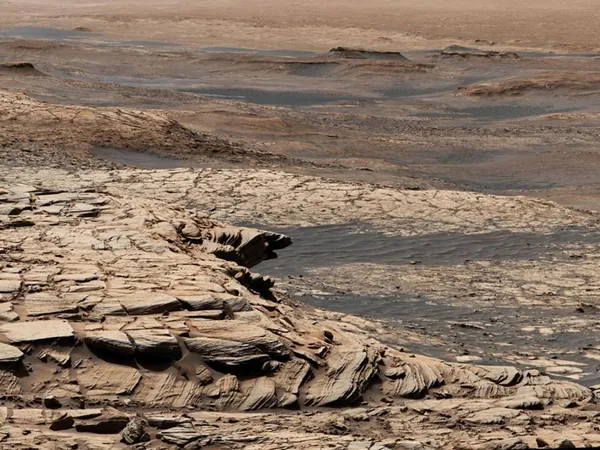
The Enigmatic Martian Methane: Is There Life on the Red Planet?
2024-11-16
Author: Siti
Introduction
The puzzling seasonal fluctuations of methane in the atmosphere of Mars have sparked scientific curiosity and speculation about the potential existence of life beneath its surface. While we have intriguing signs, the definitive answer still eludes us—unless we venture to explore deeper.
Historical Context
The search for methane on Mars isn’t a new endeavor; it dates back to the NASA Mariner missions of the 1970s. However, it was in 2013 that NASA's Curiosity rover recorded a dramatic spike in methane concentrations, detecting levels significantly above the background figures. This increase was short-lived, as the methane levels vanished, only to resurface again, prompting a whirlwind of scientific debate.
Chemical Processes
The methane mystery invites challenging questions for researchers. There are chemical reactions well-known to produce methane from Martian materials. For instance, liquid water may interact with olivine and other magnesium- and iron-rich rocks, oxidizing them and releasing hydrogen. This hydrogen can subsequently react with carbon dioxide present in the Martian atmosphere via a chemical process known as Fischer-Tropsch synthesis, resulting in methane production.
Complex Conditions
Yet, solving this conundrum involves complex conditions. First, the presence of liquid water underground is essential for these chemical reactions to occur. Furthermore, some mechanism must exist to enable the periodic cycling of methane emissions, explaining the seasonal variations observed.
The Possibility of Life
What's truly captivating is the intriguing possibility of life. On Earth, methanogens thrive in anaerobic environments, deriving energy from hydrogen and producing methane as a metabolic byproduct. If similar life forms did exist on Mars, they could theoretically account for the fluctuating methane concentrations. Seasonal changes—like warming summers or cooling winters—might prompt these organisms to respond dynamically, creating detectable variations in methane levels.
Challenges and Evidence
However, it is crucial to note that irrespective of these hypotheses, any Martian life would still require a liquid water source to survive. Moreover, despite the tantalizing prospects, undeniable evidence for life on Mars remains elusive, even from its ancient history.
Conclusion
As of now, there is no consensus among scientists regarding the origins of methane's seasonal variations on Mars, leaving the door open for various explanations—including the possibility of life forms existing on the planet. To delve deeper into this mesmerizing mystery, continued exploration missions, including potential drilling efforts, are essential. The true nature of Martian methane could possibly redefine our understanding of life beyond Earth—if we dare to dig deeper.
Follow-Up
Stay tuned as we follow this unfolding story that may soon unravel one of the cosmos' greatest mysteries!




 Brasil (PT)
Brasil (PT)
 Canada (EN)
Canada (EN)
 Chile (ES)
Chile (ES)
 España (ES)
España (ES)
 France (FR)
France (FR)
 Hong Kong (EN)
Hong Kong (EN)
 Italia (IT)
Italia (IT)
 日本 (JA)
日本 (JA)
 Magyarország (HU)
Magyarország (HU)
 Norge (NO)
Norge (NO)
 Polska (PL)
Polska (PL)
 Schweiz (DE)
Schweiz (DE)
 Singapore (EN)
Singapore (EN)
 Sverige (SV)
Sverige (SV)
 Suomi (FI)
Suomi (FI)
 Türkiye (TR)
Türkiye (TR)